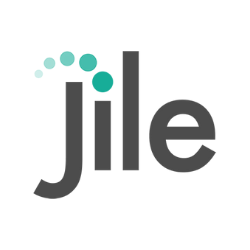Agile In Healthcare: How To Apply Agile Methodologies For Greater Efficiency And Effectiveness

Most people think of agile methodology as being used solely for software development. But did you know that agile can be applied to other industries as well - including healthcare? Agile and lean principles have been shown to be very effective in the healthcare industry, and more and more organizations are beginning to adopt them.
There is no question that the healthcare industry is in a state of flux. The changing dynamics and economy have placed new demands on providers, and patients are increasingly expecting more from their healthcare experience. At the same time, technology is advancing at a rapid pace, providing new opportunities for improving care delivery.
How can providers meet these challenges and take advantage of these opportunities? Agile methodology provides one answer.
In this blog post, we will discuss how to apply agile and lean principles in healthcare settings. We will also explore the benefits of using agile in healthcare.
What is Agile?
Agile is a set of principles and values that guide how we work. It is based on the belief that people are the most important asset in any organization and that collaboration is essential to success. Agile emphasizes adaptive planning, early delivery, and continuous improvement and encourages rapid and flexible responses to change.
Though it was preliminarily developed for software development, the agile approach has since been applied to other industries as well. In healthcare, agile methodology can be used to improve care delivery and patient outcomes.
There are many different types of agile methods, but they all share some common features. These include:
- Iterative and incremental development: Agile methods break projects down into smaller pieces so that they can be completed more quickly and efficiently.
- Self-organizing teams: Agile teams are empowered to make decisions and solve problems on their own. This allows for more flexibility and creativity.
- Continuous collaboration: Agile methods encourage constant communication and collaboration between team members.
- Flexible response to change: Agile methods enable organizations to quickly adapt to changes in the healthcare landscape.
The Need for Agile in Healthcare?
The healthcare industry is under immense pressure to improve care delivery and patient outcomes. As costs continue to rise, transparency and accountability have been the need of the hour. Agile methodology can help healthcare organizations meet these challenges by providing a more flexible and efficient way of working.
There are many reasons why agile methods are well-suited to the healthcare industry.
Considering the all-encompassing, and complex nature of the healthcare system, agile methods have emerged as the go-to solutions to cater to the following scenarios.
- Predict how patients will respond to treatment
- New available technologies
- Types of regulations to be put in place.
Agile methods allow organizations to adapt quickly to changes in the healthcare landscape. Second, agile methods emphasize collaboration between team members. This is essential in healthcare settings where different disciplines must work together to provide care.
Finally, agile methods place a strong emphasis on continuous improvement. This is essential in healthcare, where the goal is to constantly improve patient outcomes.
Agile methods have been shown to be effective in other industries, and there is no reason why they cannot be successful in healthcare as well. In fact, many healthcare organizations are already using agile methods to improve care delivery and patient outcomes.
Agile and Lean Principles in Healthcare

Agile methods are based on the following four values:
- Individuals and interactions over processes and tools
- Working software over comprehensive documentation
- Customer collaboration over contract negotiation
- Responding to change by following a plan
These values are aligned with the lean principles of respect for people, continuous improvement, and customer focus.
When applied to healthcare, these values can help organizations improve care delivery and patient outcomes.
For example, by focusing on individuals and interactions, healthcare organizations can create a more collaborative environment that leads to better communication and decision-making.
Similarly, by prioritizing working software, healthcare organizations can ensure that new technologies are quickly adopted and integrated into care delivery.
Finally, by responding to change, healthcare organizations can be more flexible and adaptable to the ever-changing landscape of healthcare.
The Benefits of Agile in Healthcare
Agile in healthcare facilitates organizations to respond to the needs of patients, staff, and other stakeholders in a quick, seamless, and hassle-free manner. It also allows for more transparency and accountability, as well as improved communication and collaboration between team members.
With that being said, the following are a few specific benefits of agile healthcare:
-
Faster project development lifecycle:
By leveraging Agile methods, healthcare organizations can develop and implement new care delivery models quickly and at scale. -
Improved patient outcomes:
Agile methods place a strong emphasis on continuous improvement. This helps to ensure that new care delivery models are constantly being refined and improved. -
Greater transparency and accountability:
Agile methods encourage constant communication between team members. This helps to ensure that everyone is on the same page and that there is a clear understanding of roles and responsibilities. -
Predictable schedule:
Agile methods help to ensure that projects are completed on time and within budget. -
Patient-focused work:
Agile methods place a strong emphasis on the needs of patients. This helps to ensure that care delivery is focused on providing the best possible outcomes for patients. -
Empowered teams:
Agile methods encourage team members to take ownership of their work. This helps to ensure that teams are motivated and empowered to make decisions that will improve care delivery. -
Set clear metrics:
Agile methods help healthcare organizations to set clear metrics for success. This helps to ensure that progress is being made and that goals are being met. For example, one metric that could be used is the number of patient safety events that occur.
Conclusion
The benefits of agile healthcare are clear. By adopting agile methods, healthcare organizations can improve care delivery and patient outcomes. What's more, agile healthcare can help to empower teams and improve communication and collaboration between team members.
If your healthcare organization is looking for ways to improve care delivery, consider implementing agile methods. You may be surprised at the difference it makes.
Thanks for subscribing to our latest blogs, thought leadership and other product updates!
Read our Privacy Notice to know more. You can opt-out of all communications anytime.
